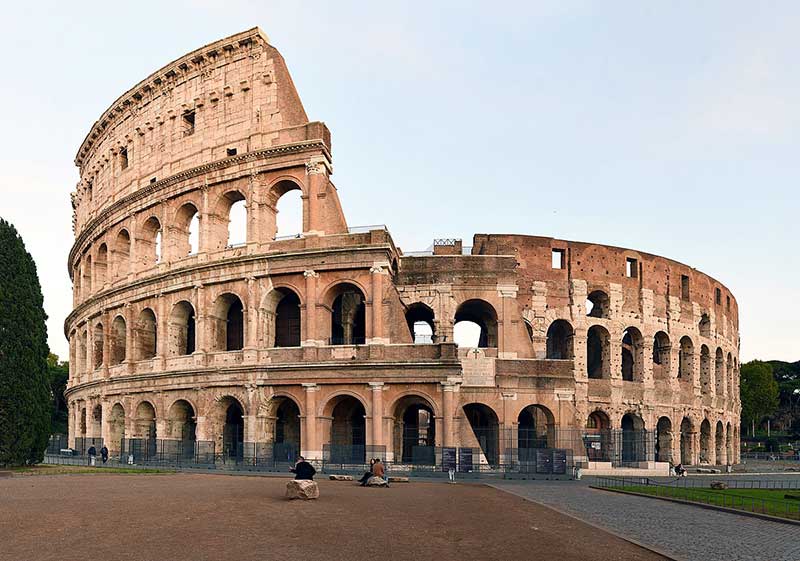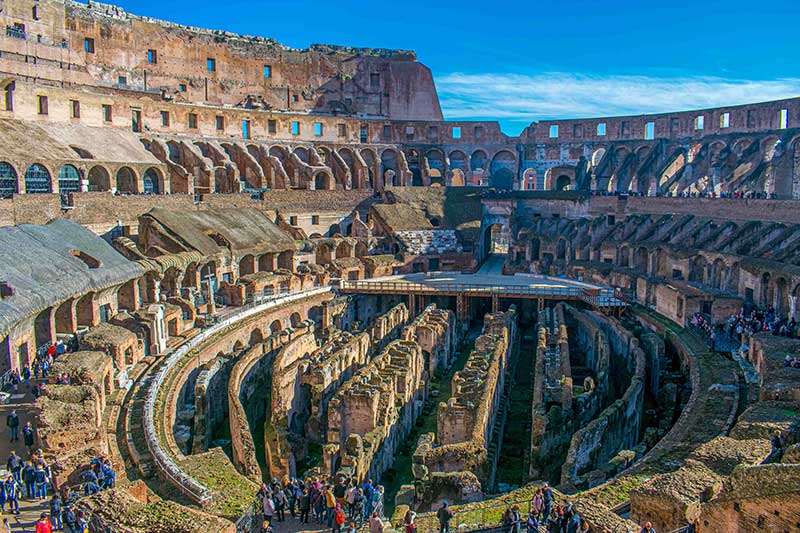
The Colosseum, also known as the Flavian Amphitheatre, stands as a testament to the magnificence of ancient Roman architecture. Located in the heart of Rome, Italy, this iconic structure has intrigued and fascinated millions of people from around the world for centuries. In this article, iqnect will delve into the history, cultural significance, restoration efforts, tourist attractions, and even controversies surrounding this architectural marvel.
Introduction
The Colosseum is an ancient amphitheater that was commissioned by Emperor Vespasian of the Flavian dynasty in AD 70-72. Its construction was completed under the rule of Emperor Titus in AD 80. The amphitheater, with a capacity to hold up to 80,000 spectators, was primarily used for gladiatorial contests and public spectacles such as animal hunts and mock sea battles.
History of the Colosseum
Construction and Purpose
The construction of the Colosseum took approximately eight years to complete, with thousands of slaves and skilled workers involved in its construction. The purpose of the Colosseum was to showcase the grandeur and might of the Roman Empire while providing entertainment to its citizens.
Architectural Design and Features
The Colosseum’s architectural design is a remarkable feat of engineering. It stands as one of the most well-preserved amphitheaters of ancient Rome, boasting an elliptical shape and a complex system of tiered seating. The ingenious design allowed for quick entry and exit of spectators, minimizing delays during events.

Significance and Cultural Impact
Gladiatorial Combat and Entertainment
Gladiatorial combat, involving battles between skilled fighters, was the centerpiece of entertainment at the Colosseum. These brutal fights, though condemned by some, were immensely popular and reflected the martial spirit of ancient Rome.
Political and Social Functions
Apart from entertainment, the Colosseum also served as a political tool for emperors to display their generosity and gain popularity among the masses. Events and games were often sponsored by rulers to win public favor.
Restoration and Preservation Efforts
Over the centuries, the Colosseum has faced damage from natural disasters and human activities. However, various restoration efforts have been undertaken to preserve this iconic structure, ensuring that it remains accessible to visitors from all corners of the globe.
Tourist Attractions and Visitor Experience
Guided Tours and Exhibitions
Presently, the Colosseum stands as one of the most visited tourist attractions in the world. Guided tours are available, offering visitors a chance to explore the vast history and architecture of the amphitheater. Additionally, exhibitions of ancient artifacts and gladiatorial weapons provide a deeper understanding of the Colosseum’s significance.
Virtual Reality and Digital Engagement
In recent times, technological advancements have allowed for virtual reality experiences that enable visitors to witness the Colosseum as it stood during its glory days. Such digital engagements enhance the overall experience, transporting visitors back in time.

The Colosseum in Popular Culture
Movies and TV Shows
The Colosseum’s grandeur and historical significance have inspired numerous filmmakers and TV producers. From epic historical dramas to action-packed adventures, the amphitheater has been featured in various films and TV shows, further cementing its place in pop culture.
Literary References
Renowned authors have also drawn inspiration from the Colosseum, incorporating it into their works of fiction. The amphitheater’s aura of ancient mystery and drama continues to captivate readers around the world.
Controversies and Debates
Animal Cruelty and Ethics
The gladiatorial games involving animals raised ethical concerns even during ancient times. Today, the use of animals in recreating historical events at the Colosseum remains a subject of debate among historians and animal rights activists.
Heritage and Tourism Management
As a UNESCO World Heritage Site, the Colosseum requires delicate balancing between tourism management and heritage preservation. Ensuring its sustainability and protecting its cultural value poses significant challenges.
Fun Facts About the Colosseum
- The Colosseum was once flooded to recreate a naval battle for spectators.
- It is estimated that over 500,000 people and over a million wild animals lost their lives in the Colosseum.
- The amphitheater’s name “Colosseum” is believed to have originated from the colossal statue of Emperor Nero nearby.
Conclusion
The Colosseum stands as a timeless marvel, symbolizing the greatness and splendor of ancient Roman civilization. Its significance in history, awe-inspiring architecture, and cultural impact continue to amaze and educate people worldwide. As we explore the corridors of this ancient amphitheater, we are reminded of the remarkable achievements of our ancestors and the need to protect and cherish our shared heritage.
FAQs
Can I still visit the Colosseum today?
Absolutely! The Colosseum is open to visitors year-round, allowing you to immerse yourself in ancient history.
Are guided tours worth it?
Yes, guided tours provide valuable insights and context, making your visit more informative and enjoyable.
Can I take photographs inside the Colosseum?
Yes, photography is allowed, so don’t forget to capture the breathtaking views.
How much time should I allocate for a visit to the Colosseum?
Plan for at least two to three hours to explore the Colosseum thoroughly.
What are some nearby attractions to visit after the Colosseum?
The Roman Forum and Palatine Hill are just a short walk away and offer further glimpses into ancient Rome’s history.
